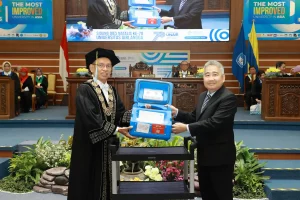Infertility in women and stem cells as potential
Stem cells are defined as undifferentiated cells with the capacity to proliferate and differentiate into various types of tissue. The fundamental difference between pluripotent stem cells generated from blastocysts and multipotent stem cells originating in mature organisms is the number of differentiated cell types that can be produced by the pluripotent stem cells derived from blastocysts.
Secondary infertility means that a married couple has or has had children before, but is currently unable to have another child after one year of sexual activity 2-3 types average weekly without the use of contraception or any other way. In Indonesia, the prevalence of secondary infertility is ± 12%, or around 3 million couples. Meanwhile, primary infertility is 8-12%. The incidence of women with secondary infertility in Indonesia is around 15% at the age of 30-34 years, a 30% rise between the ages of 35 to 39, and a 64% increase between the ages of 40 to 44.
Method and Result
This study was conducted using an online literature study by accessing scientific journals at national and international levels and scientific articles related to stem cells, infertility, and women. The result of this study revealed that the technique is known as ‘cloning’ and has been used on animals such as mice, sheep, and cattle to produce animals that are genetically and phenotypically better than the donor parent oocytes themselves. However, it is possible to apply the technique to couples who have trouble conceiving so that genetically healthy individuals are produced. It means, that unwanted congenital abnormalities can be prevented, particularly among older couples. In humans, this technique can be combined with IVF (In Vitro Fertilization) to produce a zygote that can be transferred to the patient’s uterus or surrogate mother.
Conclusion
From the results of this study, it can be seen the potential of stem cells (stem cells) in treating infertility in women. Further studies are needed especially pre-clinical and clinical trials so that they can be widely applied.
Author: Dr. Maslichah Mafruchati M.Si.,drh
Details of the research can be viewed here:
https://www.phcogj.com/article/1766
Pharmacognosy Journal
E- ISSN: 0975-3575









